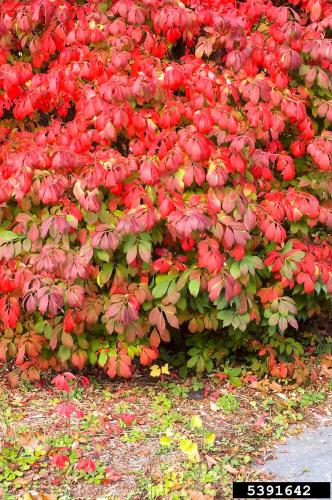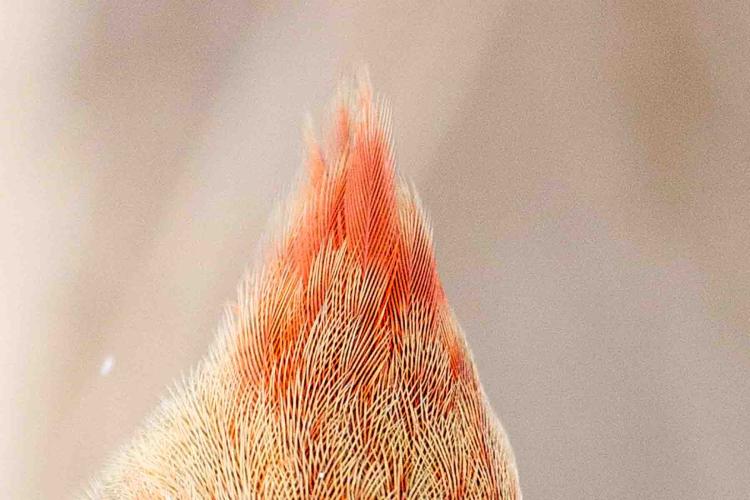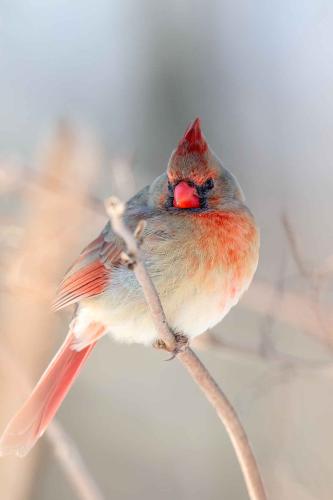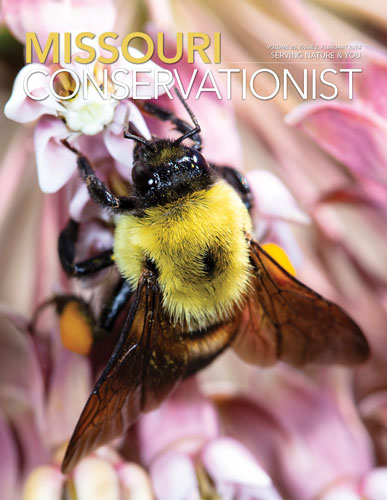Catch-and-Keep Trout Season Starts March 1
Opening day at Missouri’s four trout parks expected to draw large crowds
March 1 marks the annual opening of catch-and-keep trout fishing in Missouri at the state’s four trout parks: Bennett Spring State Park near Lebanon, Montauk State Park near Licking, Roaring River State Park near Cassville, and Maramec Spring Park near St. James. The catch-and-keep season at the trout parks runs through Oct. 31.
MDC operates trout hatcheries at all four parks and stocks rainbow trout daily throughout the season. Staff stock more than 800,000 trout annually at the state’s four trout parks and approximately 1.5 million trout annually statewide.
Trout anglers need a daily trout tag to fish in Missouri’s trout parks during this time. Daily trout tags can only be purchased at each of the four trout parks. MDC encourages trout anglers to have the correct amount of cash for daily tags if possible. Missouri residents 16 through 64 and nonresidents 16 and older also need a fishing permit in addition to the daily trout tag.
The cost of a daily trout tag is $5 for adults and $3 for those 15 years of age and younger. A daily fishing permit is $8. The daily limit is four trout.
Get more information on trout parks at short.mdc.mo.gov/4cw.
MDC encourages trout anglers to buy their fishing permits ahead of time from numerous vendors around the state, online at mdc.mo.gov/buypermits, or through MDC’s free mobile apps, MO Hunting and MO Fishing, available for download through Google Play for Android devices or the App Store for Apple devices.
Missouri has a wealth of trout waters, including red-, white-, and blue-ribbon areas that support naturally reproducing trout. For more information on trout fishing in Missouri, visit MDC online at short.mdc.mo.gov/Zvy. Get the information in booklet form with our Trout Fishing in Missouri booklet, available for free at MDC locations where publications are found, or order one online at short.mdc.mo.gov/4fK.
MDC also offers the Missouri Blue Ribbon Trout Slam to honor anglers who catch a trout in at least five of the nine blue-ribbon trout streams. Participants can have their successes listed on the MDC website. Learn more at mdc.mo.gov/troutslam.
To prevent the spread of the invasive alga called didymo or “rock snot,” the use of shoes, boots, or waders with porous soles of felt, matted, or woven fibrous material is prohibited at all trout parks, trout streams, Lake Taneycomo, and buffer areas. Get more information at short.mdc.mo.gov/4ZA.
Discover Nature With us and Agents of Discovery
Don’t let winter temperatures keep you inside. There’s still much to explore in this season. To help kids and adults discover nature, we are once again partnering with the Agents of Discovery mobile gaming app for its Winter Edition Missions.
Agents of Discovery is an educational gaming app that allows users to engage with nature while completing missions — or games — proving that screen time can be green time.
Winter Edition Missions will run through March 1. Anyone can join by downloading the free app and completing the missions at participating locations. Each mission consists of educational challenges that teach players about local history, culture, ecosystems, and safety.
Missions include prizes to reward players — or agents — who participate. Once an agent completes a mission, they can earn stickers, pins, and other prizes.
New Winter Edition Missions can be found at several MDC conservation nature centers:
- “How Do Animals Handle the Winter?” at Runge Conservation Nature Center in Jefferson City
- “Operation Backyard Bird” at Cape Girardeau Conservation Nature Center
- “Winter Mission” at Powder Valley Conservation Nature Center in Kirkwood
- “Winter Walk” at Springfield Conservation Nature Center
Download the free app and create an agent profile. Then pick a mission in your area. Download the mission before heading to it, so you can play the game without WiFi or a data connection. Then use your secret agent tool to find and unlock challenges.
Agents of Discovery is available for download through the App Store for Apple products or Google Play for Android devices. For more information on Agents of Discovery, visit short.mdc.mo.gov/4PQ.
Austin Davis,
St. Francois County
Conservation Agent
As MDC’s first conservation agent with hearing loss present at birth, I appreciate the opportunity to use my position to reach the deaf and hard of hearing community. Many people in our community fear the outdoors or think they can’t fully participate. They ask me how they can do certain things — like fish and hunt — if they can’t hear. Education and access are the keys. Using my skills — including my fluency in American sign language — I can expand programs to get the deaf and hard of hearing community more involved. MDC provided me with the adaptations and accommodations to do my job. I want to do the same for the deaf and hard of hearing community because nature is for everyone.
Invasive nonnative species destroy habitat and compete with native plants and animals. Please do what you can to control invasive species when you landscape, farm, hunt, fish, camp, or explore nature.






Burning Bush
by Angela Sokolowski
Burning bush (Euonymus alatus), or winged euonymus, is a common landscaping shrub that grows up to 15 feet tall. Football-shaped opposite leaves, at 1–2 inches long, turn bright red in the fall, giving it a stunning fiery appearance. Yellow-green flowers with four petals bloom in May–June and orange to red oval berries appear July–October.
Why It’s Bad
Burning bush will invade natural habitats, choking out the understory of forests and woodlands and filling in open areas like pastures, roadsides, and prairies. As with other invasives, this will displace native species that our wildlife and complex natural systems depend on.
How to Control It
During the growing season, this plant blends in, but brilliant scarlet autumn foliage makes it noticeable in the fall. Winged stems also help confirm identification. Plants can be marked in fall for winter treatment, if convenient.
Mechanical: Small plants can be hand pulled or dug any time of year.
Chemical: Larger shrubs can be cut-stump treated. Cut the trunks near ground level and apply herbicide to the freshly cut stump, using 25 percent glyphosate or triclopyr. In the dormant season, trunks can be basal bark treated. Spray the first 8–12 inches of the trunk with 25 percent glyphosate or triclopyr with an oil carrier, not water.
Alternative Native Plants
American burning bush (also known as wahoo)
To learn more, visit short.mdc.mo.gov/4SX.




Northern Cardinal’s Crest
Northern cardinals — both males and females — have red crests adorning the tops of their heads. The female cardinal, pictured here, has a more orange-red crest, which stands out next to her muted feathers. These crests are not just jaunty accessories — they serve a purpose. Referred to as mood mohawks, cardinals raise their crests to show agitation and lower them at rest. Males and females also use their crests during courtship. Males raise their crests to appear more robust and attractive to potential mates.
News and updates from MDC
And More...
This Issue's Staff
Editor - Angie Daly Morfeld
Associate Editor - Larry Archer
Photography Editor - Cliff White
Staff Writer - Kristie Hilgedick
Staff Writer - Joe Jerek
Staff Writer – Dianne Van Dien
Designer - Shawn Carey
Designer - Marci Porter
Photographer - Noppadol Paothong
Photographer - David Stonner
Circulation – Marcia Hale






















